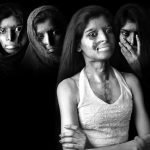Scientists at Columbia University and the New York Genome Center have built up a strategy to rapidly and precisely recognize individuals and cell lines from their DNA. The innovation could have various applications, from recognizing casualties in a mass debacle to examining wrongdoing scenes. In any case, its most quick utilize could be to signal mislabeled or tainted cell lines in tumor tests, a noteworthy reason that reviews are later negated. The revelation is portrayed in the most recent issue of eLife.

“Our technique opens up better approaches to use off-the-rack innovation to profit society,” said the examination’s senior creator Yaniv Erlich, a software engineering educator at Columbia Engineering, an extra center part at NYGC, and an individual from Columbia’s Data Science Institute. “We’re particularly amped up for the possibility to enhance cell-verification in malignancy examine and conceivably accelerate the revelation of new medications.”
Also read this :- How To Became A Computer Programmer
The product is intended to keep running on the MinION, an instrument the extent of a charge card that pulls in strands of DNA through its minuscule pores and peruses out successions of nucleotides, or the DNA letters A, T, C, G. The gadget has made it workable for analysts to think about microscopic organisms and infections in the field, however its high mistake rate and huge sequencing holes have, up to this point, constrained its utilization on human cells with their billions of nucleotides.

In a creative two-advance process, the specialists plot another approach to utilize the $1,000 MinION and the wealth of human hereditary information now online to approve the personality of individuals and cells by their DNA with close immaculate precision. To start with, they utilize the MinION to grouping irregular strings of DNA, from which they select individual variations, which are nucleotides that change from individual to individual and make them exceptional. At that point, they utilize a Bayesian calculation to arbitrarily contrast this blend of variations and comparing variations in other hereditary profiles on document. With each cross-check, the calculation refreshes the probability of finding a match, quickly narrowing the hunt.
Tests demonstrate the technique can approve a person’s personality after cross-checking in the vicinity of 60 and 300 variations, the analysts report. Inside minutes, it confirmed the character of the examination’s lead creator, Sophie Zaaijer, a previous individual from NYGC and now a postdoctoral specialist at Cornell Tech.
To do this, the MinION coordinated the readout of Zaaijer’s genome, gathered from an example of cheek cells, with a reference profile put away among 31,000 different genomes on people in general database, DNA.land. Erlich’s character was confirmed a similar path, with starting sequencing done by Columbia understudies in the Ubiquitous Genomics class he and Zaaijer educated in 2015.
They call their re-recognizable proof system ‘Crony outlining’ which Zaaijer analyzes to the mind’s capacity to make out a flying creature from a couple of telling highlights in a dynamic Picasso line-drawing. The MinION’s hereditary ‘draw’ of a cell-test is contrasted with a developing database of portrayals – comparably deficient hereditary profiles created by at-home DNA-test units like 23andMe and gave to science by buyers.
“Utilizing our strategy, one needs just a couple of DNA peruses to surmise a match to a person in the database,” says Zaaijer.
The most encouraging use for ‘Crony drawing’ might be as a modest cell-verification device in exploratory research, say researchers acquainted with its abilities. In the examination, specialists immediately coordinated a strain of leukemic cells sequenced by the MinION against a reference document in the Cancer Cell Line Encyclopedia database, they report. When they had a go at sullying the cells with different societies, it effectively dismissed a match if defilement levels moved over 25 percent.
The utilization of misidentified or debased cell lines in medicinal research is reprimanded for as much as 33% of the evaluated $28 billion spent every year on ponders that can’t be reproduced, as indicated by one late investigation. In a 2014 paper in Science, the chief of the National Institute of General Medical Sciences, Jon Lorsch, called for new approaches and advances to address the issue.
Without the costly hardware expected to approve cell lines alone, most analysts either skip approval or ship their societies to particular labs which can defer vital discoveries and medications. In the event that a simpler option were accessible, most scientists would utilize it, says Neville Sanjana, a center employee at NYGC and associate educator at NYU’s Department of Biology who deals with skin and lung disease cell lines and was not engaged with the examination.
“Nobody needs to sit around idly and reagents chipping away at the wrong cells,” he says. “At the correct value, each lab will receive this.”
Coauthors of the investigation are Assaf Gordon at NYGC; Daniel Speyer at Columbia Engineering and NYGC; Robert Piccone at Columbia’s Data Science Institute and Simon Cornelis Groen, at NYU’s Center for Genomics and Systems Biology.


